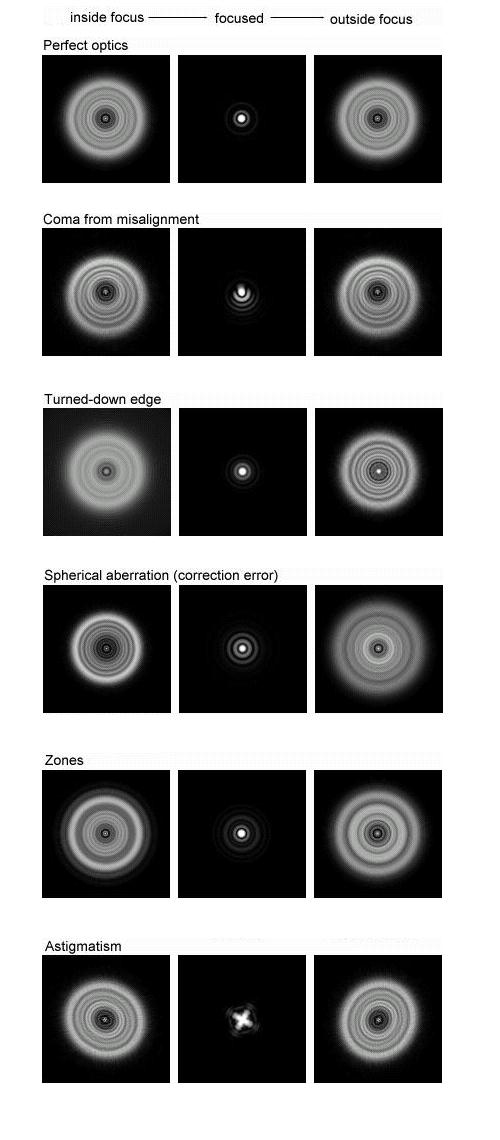
JeffPo's Star Testing Page
Last update: 12/17/04
One way to verify the quality of the optics in a telescope is to perform a star test. This is also a handy way to check the collimation or alignment of the optics. To perform a star test, center a relatively bright star in the field of view, using a medium to high power eyepiece. Then slightly defocus the image of the star. The image should look something similar to a bull's eye pattern, with concentric rings. By examining this pattern, one can determine how well the scope is collimated and the quality of the optics.
For the collimation check, if the optics are aligned correctly the rings of light will be perfectly centered and concentric. If the rings are off or distorted to one side, then the telescope mirror needs to be adjusted. You basically center the image, turn the appropriate collimation screw, then re-center the image for checking. If it's still off then you repeat the process. Correcting the mirror alignment is a simple task that must be done on all reflectors every now and then. It will become second nature.
Concerning the testing of the mirror for quality, a perfect system will have identical patterns on either side of focus. It's hard to find a "perfect" mirror, but the degree of error can be indicator of whether a mirror should be replaced, re-done, or if it's good enough. The ring pattern variation and differences on either side of focus can be used as indicators of what kinds of errors are in the mirror figure. Personally, I think all can be lived with, with the exception of astigmatism. I wouldn't accept a mirror that has astigmatism.
Below you'll find images of what star tests should look like according to what kind of error the mirror has:
